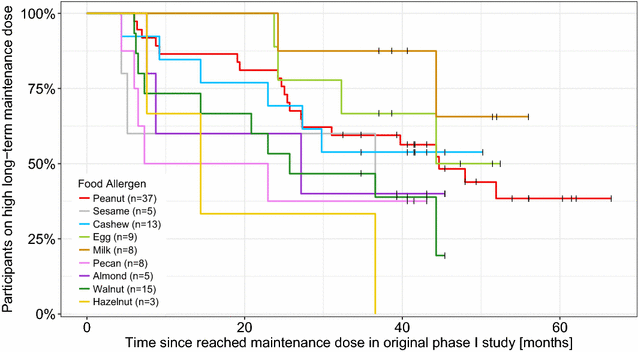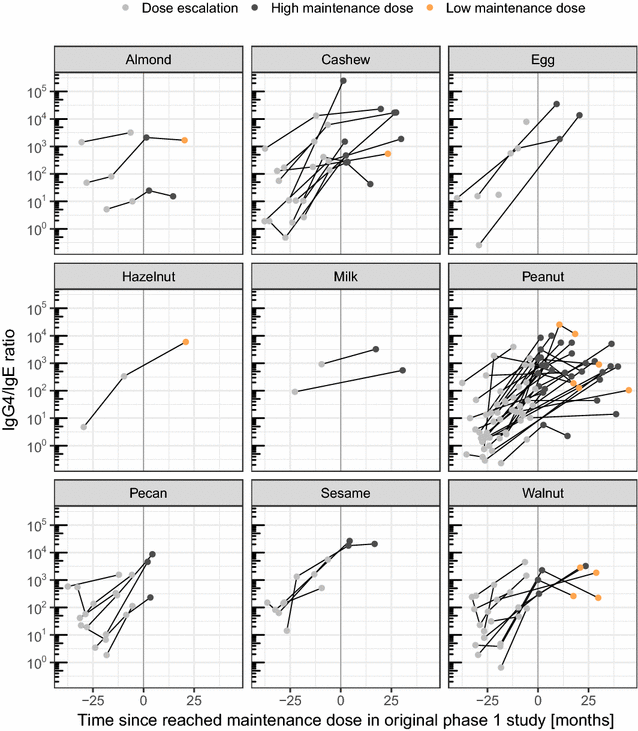Feasibility of sustained response through long-term dosing in food allergy immunotherapy
- PMID: 29296108
- PMCID: PMC5738818
- DOI: 10.1186/s13223-017-0224-7
Feasibility of sustained response through long-term dosing in food allergy immunotherapy
Abstract
Background: Clinical trials using oral immunotherapy (OIT) for the treatment of food allergies have shown promising results. We previously demonstrated the feasibility of desensitization for up to 5 food allergens simultaneously through OIT. In this observational study, we report the findings of long-term follow-up (LTFU) of the participants treated through a single site OIT phase 1 trial.
Methods: The participants (n = 46) were followed up to 72 months since the time they reached 2 g maintenance dose per food in the initial phase 1 trial. During the long-term maintenance dosing, participants continued or reduced the initial maintenance dose of food allergen protein to high (median 2 g protein) vs. low (median 300 mg protein). Participant follow-up included clinical monitoring, standardized OFCs, and in some cases, skin prick tests and measurement of allergen-specific IgE and IgG4.
Results: Irrespective of the high vs. low long-term maintenance dose during LTFU, all participants were able to ingest 2 g protein of each food allergen protein during OFCs performed at the end of our LTFU.
Conclusion: Our LTFU cohort of food OIT participants from a single site, phase 1 OIT study, supports the feasibility of sustained desensitization through long-term maintenance dosing. Trial registration Registry: Clinicaltrial.gov. Registration numbers: NCT01490177 (original study); NCT03234764 (LTFU study). Date of registration: November 29, 2011 (original study); July 26, 2017 (LTFU study, registered).
Keywords: Desensitization; Food allergy; Maintenance; Oral immunotherapy.
Figures





References
Grants and funding
LinkOut - more resources
Full Text Sources
Other Literature Sources
Medical

